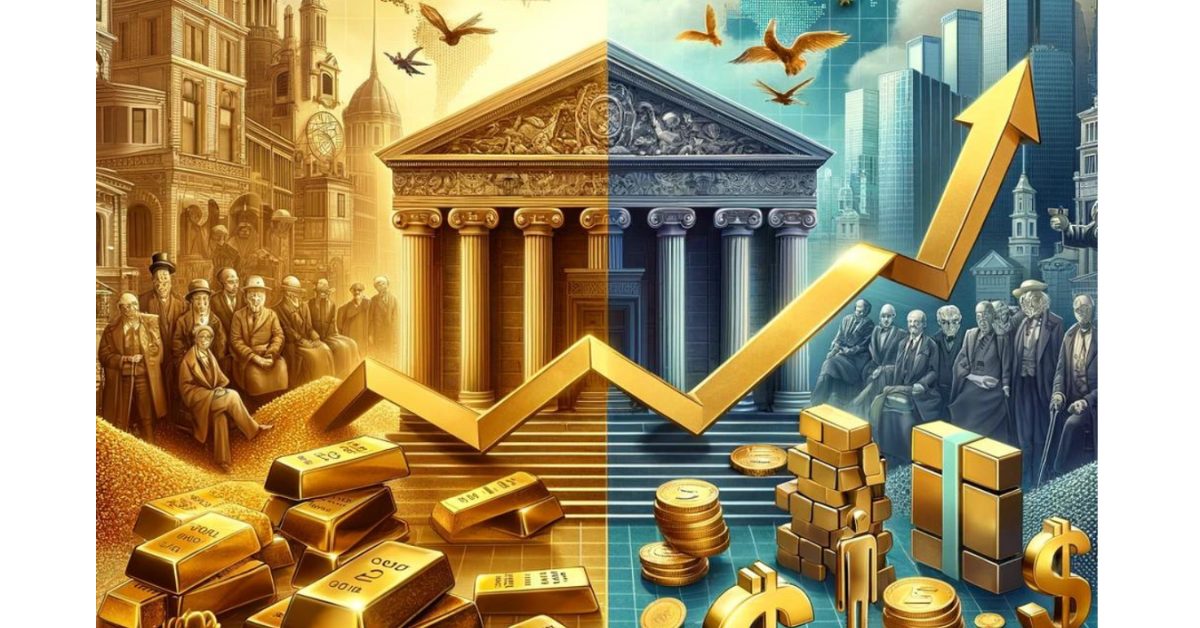Introduction
The history of exchange rates is a fascinating journey through time, reflecting the evolution of global economic systems, political power dynamics, and technological advancements. This blog explores the pivotal shifts from the Gold Standard to the modern era of floating exchange rates, highlighting how these changes have shaped international trade, finance, and economic policy.
The Gold Standard Era
The Gold Standard, a monetary system linking currency value to gold, dominated the late 19th and early 20th centuries, offering simplicity, stability, and predictable international trade by converting paper money into gold upon request.
However, the Gold Standard was not without its flaws. It limited countries’ ability to adjust their monetary policies to respond to domestic economic conditions. Additionally, the reliance on gold reserves made economies vulnerable to gold supply fluctuations, leading to periodic bouts of inflation and deflation.
The Bretton Woods System
The Bretton Woods Conference of 1944 marked a significant turning point in the history of exchange rates. Post-World War II, delegates from 44 Allied nations gathered to create a new international monetary system. The resulting Bretton Woods System established the U.S. dollar as the world’s primary reserve currency, pegged to gold at $35 an ounce, while other currencies were pegged to the dollar. This arrangement aimed to combine the stability of the Gold Standard with the flexibility of allowing governments to adjust their exchange rates under certain conditions.
The Bretton Woods System facilitated post-war economic recovery and expansion but eventually came under strain due to the U.S. dollar’s overvaluation and America’s dwindling gold reserves. By the late 1960s, it became clear that the fixed exchange rate regime was unsustainable.
The Transition to Floating Exchange Rates
The 1971 collapse of the Bretton Woods System led to the adoption of floating exchange rates in major economies. President Nixon suspended the dollar’s convertibility into gold, allowing currency value to be determined by supply and demand dynamics.
Floating exchange rates offered greater flexibility for countries to manage their economic policies, allowing for adjustments in response to inflation, unemployment, and other domestic economic indicators. However, this system also introduced increased volatility and uncertainty in international trade and investment.
The Impact of Technological Advancements
The digital revolution and the advent of electronic trading have transformed the foreign exchange market, increasing its efficiency, liquidity, and accessibility. Today, the Forex market is the largest and most liquid financial market globally, with trillions of dollars traded daily. Technological advancements have democratized access to foreign exchange trading, allowing individuals and institutions to participate in the market with greater ease.
Conclusion
The evolution of exchange rates from the Gold Standard to floating rates reflects the global economy’s complexity and the pursuit of a balance between stability and flexibility. These systems influence economic policies, international trade, and financial markets. As the economy evolves, exchange rate mechanisms adapt to new realities and geopolitical changes.
#GoldStandard #BrettonWoods #FloatingRates #ForexMarket #EconomicHistory #GlobalEconomy #CurrencyTrading #MonetaryPolicy #FinancialStability #ExchangeRateEvolution #InternationalTrade #DigitalRevolution



